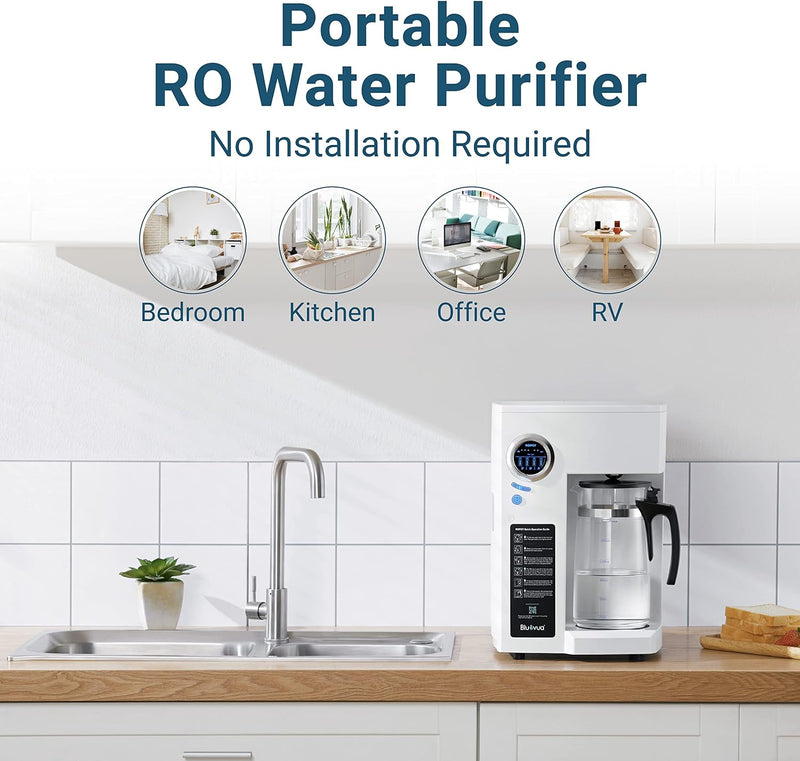Unlock the Secrets to Choosing the Perfect Reverse Osmosis Water System!
In today's world, the quality of the water we drink is more important than ever. With increasing concerns about contaminants in municipal water supplies, reverse osmosis (RO) water systems have gained immense popularity among homeowners seeking clean and safe drinking water. These systems use advanced filtration technology to remove impurities, offering a reliable solution for ensuring the health and well-being of families. As the demand for these systems continues to grow, so does the variety of options available in the market. This article aims to guide you through the process of selecting the best reverse osmosis water system for your needs by evaluating the various factors and types available.

Understanding Reverse Osmosis Technology
Reverse osmosis is a water purification process that utilizes a semi-permeable membrane to remove a wide range of contaminants from water. The science behind RO is relatively straightforward: water is forced through the membrane, which blocks particles larger than water molecules, including dissolved salts, bacteria, and heavy metals. This process effectively reduces the concentration of impurities, making the water safer for consumption. Compared to traditional water purification methods, such as carbon filtration or boiling, reverse osmosis is particularly effective at removing a broader spectrum of contaminants. Many homeowners, including my friend Sarah, have noted that after installing an RO system, the taste and smell of their tap water improved significantly, leading to increased hydration and overall health.
Key Factors to Consider When Choosing a System
When selecting the best reverse osmosis system, it's essential to consider several key factors that will influence your decision. First, assess the filtration capacity, which indicates how much water the system can purify in a given timeframe. For households with high water consumption, a system with a larger capacity may be necessary. Next, consider the water waste ratio, as some systems produce more wastewater than others—aim for a lower ratio to conserve water. Lastly, evaluate maintenance requirements; some systems may require frequent filter changes, while others provide longer-lasting filters. By prioritizing these factors based on your specific needs and usage patterns, you can make a more informed decision that suits your family's lifestyle.
Capacity and Size
Determining the appropriate size and capacity of a reverse osmosis system is crucial for meeting your household’s water needs. Start by estimating your family’s daily water consumption, including drinking, cooking, and food preparation. For instance, a family of four may require a system that delivers at least 50 gallons of purified water per day. Additionally, consider the physical space available for installation—under-sink systems are compact and ideal for smaller kitchens, while whole-house systems require more room and plumbing adjustments. My neighbor recently upgraded to a larger system after realizing their previous unit couldn't keep up with their growing family's demands, enhancing their overall convenience and satisfaction.
Maintenance and Replacement Filters
Understanding maintenance requirements is vital for ensuring your reverse osmosis system operates efficiently over time. Regular maintenance typically involves changing filters, which can vary in frequency based on usage and water quality. It's essential to factor in these costs when selecting a system, as some models may have more expensive filter replacements than others. Additionally, consider the availability of replacement filters and whether they can be conveniently purchased online or locally. A friend of mine learned the hard way when their system’s filters became difficult to find, causing unnecessary delays in maintaining their water quality.
Comparing Different Types of Reverse Osmosis Systems
Reverse osmosis systems come in various types, each with its unique advantages and disadvantages. Under-sink systems are popular for their compact design and effective filtration, making them ideal for smaller kitchens. Countertop systems are portable and easy to install, perfect for renters or those who move frequently. Whole-house systems, while more expensive, provide comprehensive filtration for all water sources in the home, making them suitable for larger families or homes with multiple bathrooms. When making your choice, consider your specific needs, space, and budget to find the best option that aligns with your lifestyle.
Installation and Setup Considerations
The installation process for reverse osmosis systems can vary significantly based on the type you choose. Many under-sink systems are designed for DIY installation, requiring minimal plumbing skills and tools. However, if you opt for a whole-house system, professional installation may be necessary, which can add to the overall cost. It's crucial to factor in these installation costs when budgeting for your reverse osmosis system. Additionally, consider any plumbing modifications that may be required, especially if you live in an older home. A friend of mine opted for professional installation after realizing the complexities involved in setting up their whole-house system, ultimately saving time and ensuring proper functionality.
Making an Informed Decision
Choosing the best reverse osmosis water system is a significant decision that impacts your family's health and hydration. By understanding the technology behind reverse osmosis, considering essential factors such as capacity, maintenance, and installation, and comparing different types of systems, you can make a well-informed choice that meets your specific needs. Remember to assess your household's water consumption patterns and budget to find the perfect fit. Investing in a high-quality reverse osmosis system will not only enhance the quality of your drinking water but also provide peace of mind for you and your loved ones.







Comments